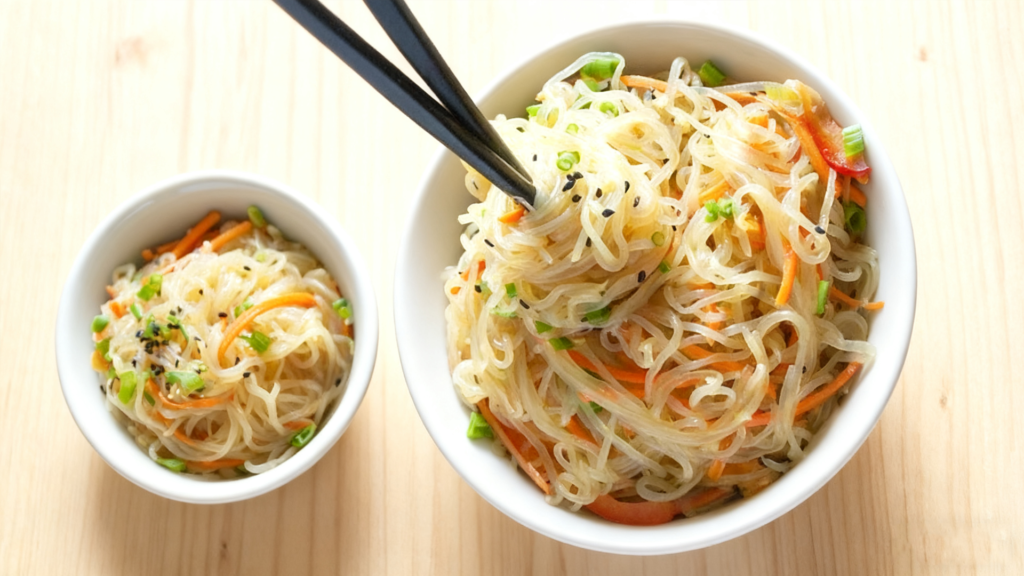
Contact Us through info@lovekonjac.com
Konjac products have been around for centuries in Asia and have recently gained popularity in Western countries as a healthy alternative to traditional pasta and noodles. However, there is a lot of confusion surrounding the legality of Konjac products in Australia. Many people believe that konjac noodles are banned in Australia, but the truth is that it’s only konjac jelly that’s banned. In this article, we will explore the reasons behind this misconception and provide examples to clear up any confusion.

First, let's clarify what konjac noodles are. Konjac noodles are a type of noodle made from the konjac yam. They are also known as shirataki noodles, which means "white waterfall" in Japanese. These noodles are popular in Japanese and Chinese cuisine and have gained popularity in other parts of the world due to their low-calorie and low-carbohydrate content.
The short answer is no, konjac noodles are not banned in Australia. In fact, they are widely available in many supermarkets and health food stores. The confusion may have arisen from the fact that konjac jelly is banned in Australia.

Konjac jelly is a jelly-like substance made from the konjac yam. It is often used as a thickener or a gelling agent in food products. However, konjac jelly has been linked to choking deaths in several countries, including Japan and South Korea. The jelly has a unique texture that makes it difficult to swallow, especially for young children and the elderly.
In response to these incidents, Australia issued directives to ban the sale of konjac jelly. The bans are intended to protect consumers from the potential choking hazard posed by konjac jelly.

Examples of Konjac Jelly Bans
The ban on konjac jelly is not just limited to Australia. Many other countries, including the United States, have also imposed restrictions on the product. Here are a few examples:
Choking risk
It’s important to understand the difference between konjac noodles and konjac jelly. While both are made from the konjac yam, they are processed differently and have different properties. Konjac noodles are made by combining konjac flour with water and other ingredients. They are then shaped into noodles and boiled. Konjac noodles have a neutral taste and a slightly rubbery texture.

Konjac jelly, on the other hand, is made by combining konjac flour with water and other ingredients and then allowing it to set. The result is a jelly-like substance that is often used as a thickener or a gelling agent. Konjac jelly has a unique texture that makes it difficult to swallow and has been linked to choking deaths.
Konjac noodles, also known as shirataki noodles, are a type of noodle made from the root of the konjac yam plant. They are a popular low-carb and low-calorie alternative to traditional wheat noodles. Here are some of the nutritional benefits of konjac noodles:
Energy (kcal) | 9.5 |
Energy (kJ) | 39 |
Protein | 0 g |
Carbohydrate | 0.6 g |
Total Fat | 0 g |
Sodium | 3 mg |
Dietary Fibre | 3.56 g |
Overall, konjac noodles are a nutritious and low-calorie option for people who are looking for a healthy alternative to traditional noodles. However, it’s important to note that konjac noodles may not be suitable for everyone, as they have a unique texture and can cause digestive discomfort in some people.
To prepare Konjac noodles, also known as Shirataki noodles, follow these steps:

If you prefer a softer texture, you can try one of the following tips:
Tip 1: Add a spoonful of vinegar and let the noodles soak for 1 to 2 minutes, then rinse again. This can help soften the texture of the konjac noodles.
Tip 2: Marinate the Konjac noodles in a tomato-based sauce for 2 to 3 minutes. This can also help soften the texture, giving you a more pasta-like consistency.
Once the noodles are prepared to your liking, you can use them in various dishes, such as stir-fries, soups, or salads. Enjoy!

In conclusion, konjac noodles are not banned in Australia. The confusion may have arisen from the fact that konjac jelly is banned in Australia and other countries due to its potential choking hazard. It’s important to understand the difference between konjac noodles and konjac jelly and to use them responsibly. As always, it’s important to read the labels and follow the instructions when using any food product.

No, Konjac Noodle is low in carbohydrates, making it a great alternative to regular noodles.
Yes, Konjac Noodle is legal in Australia, and it is perfectly safe to consume.
You can buy Konjac Noodle from health food stores, supermarkets, and online retailers in Australia.
What are the nutritional benefits of the Konjac Noodle?
Konjac Noodle is low in calories, high in fiber, and contains glucomannan, a type of soluble fiber that helps in weight loss.